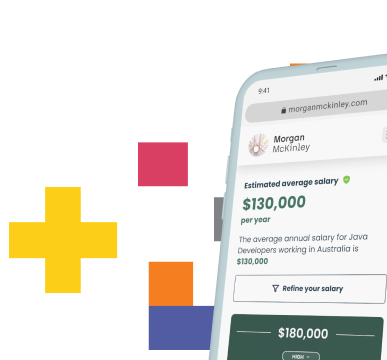Liz Fong-Jones, Field CTO at HoneyComb: Leadership Tips for Tech

In the fast-paced world of software development, having visibility into your systems is crucial for maintaining performance and mitigating outages. Honeycomb, a developer tools startup, has emerged as a leader in the field of observability, offering innovative solutions to help organisations understand and optimise their software infrastructure.
To gain insights into Honeycomb's mission, the role of a Field CTO and insights and advice for Women in Technology today, I had the pleasure of sitting down with Liz to discuss.
A Serendipitous Journey
Liz's journey to Honeycomb was unexpected, to say the least. "It all started with a series of online debates with Charity Majors, the company's co-founder," she recalls. "Our disagreements, while passionate, ultimately led to a mutual respect and a realisation that we could collaborate to make a significant impact in the tech world."
In 2019, Liz joined Honeycomb, drawn to the company's commitment to innovation and its focus on empowering developers. "I was particularly impressed by the company's women-led leadership," she explains. "It's refreshing to work in an environment where diversity and inclusivity are at the forefront."
What’s something that Honeycomb does differently from other companies?
Honeycomb specialises in observability, which is all about understanding what’s happening inside your systems through logs, metrics, and traces. This approach is crucial for diagnosing problems quickly and ensuring everything runs smoothly. It’s become essential for modern development teams. I often compare it to having a powerful microscope—you can look deep into your infrastructure and spot potential issues before they turn into bigger problems. That level of insight sets us apart.
Can you tell us about your role as Field CTO at Honeycomb?
As Field CTO, I play a pivotal role in bridging the gap between Honeycomb and its customers. My primary responsibility is understanding our customers' needs and challenges. I work closely with them to provide tailored solutions and guidance that help them achieve their goals and get the most value from our products. I also serve as an advocate for Honeycomb’s approach to observability, sharing my expertise with the broader developer community. I’m really passionate about helping others understand the benefits of observability and how it can improve their workflows.
What excites you most about the future of Honeycomb and the direction the company is heading?
I'm really excited about the potential for Honeycomb to keep shaping the future of software development. We’re always looking for new ways to innovate and improve our products. Our goal is to become the go-to tool for developers who want to build reliable and scalable applications. One area we're focusing on is the integration of artificial intelligence (AI). AI has the potential to revolutionise how we interact with data, and we’re exploring how we can leverage AI to make our tools even more intuitive and powerful.
How would you describe the work culture at Honeycomb, and what makes it unique?
At the heart of Honeycomb's mission is a commitment to providing exceptional user experiences. We understand that developers are under immense pressure to deliver results. Our goal is to empower them by providing tools that are easy to use and effective.
Honeycomb is more than just a software company. We're a community of developers who are passionate about building better software. By focusing on observability and user experience, we're helping to shape the future of the tech industry.
What factors have been critical to the success that you have achieved in your career so far?
In the fast-paced world of Site Reliability Engineering (SRE), success goes beyond just having technical expertise. I believe curiosity and empathy are the two most critical factors. You’ve got to have a curious mindset—don’t be afraid to ask questions or explore new technologies. Even if you don’t know everything, a willingness to learn and adapt will take you far. Empathy is just as important. By being kind and understanding, you can build strong relationships with your colleagues and partners, creating a collaborative environment where the team is aligned toward common goals. It’s about more than just the tech; it’s about working well together.
What's the most valuable piece of advice you have received in your career and how did it help you?
The path to success is rarely straightforward, and I’ve learned some of my most valuable lessons from challenging experiences. One that really stands out comes from a piece of advice I received from a dear friend, Carla Geiser, who worked on the complex healthcare.gov rollout. She once told me how important it is to build trust and understanding before trying to implement any changes.
I learned this the hard way when I joined a newly acquired team at Google, where I was tasked with integrating their practices with Google's SRE methodology. Initially, I approached it by pointing out how they deviated from the established SRE norms. In hindsight, that direct approach didn’t work—it was counterproductive. It was like trying to transplant an organ without considering the risk of rejection. My suggestions weren’t embraced because I hadn’t taken the time to build trust or understand their existing processes.
Carla’s advice really resonated with me. I realised that before suggesting change, you have to build trust with your team, understand their challenges, and learn the reasons behind their current approach. Be present and supportive so they’re more open to your recommendations. That experience transformed my leadership style, making empathy a core part of how I approach collaboration and drive successful change.
What advice would you give to Women in Tech trying to achieve success in today's market?
In today's challenging tech market, with layoffs and increased competition for jobs, women seeking success may face unique hurdles, but there are definitely ways to overcome them and stand out. First, networking is absolutely key. Warm referrals can significantly increase your chances of getting your foot in the door. I always recommend attending conferences, industry events, and using online platforms to build connections.
While technical skills are essential, soft skills play a vital role in career advancement. Don’t underestimate the importance of communication, collaboration, and leadership—these can set you apart in a competitive market.
I also encourage women to be proactive and courageous. Don’t be afraid to ask questions, seek out opportunities, and take on new challenges. Be your own advocate and believe in your abilities.
Public speaking is another great tool for building your brand and establishing yourself as an expert. Sharing your knowledge and insights through speaking engagements can open doors to new opportunities.
Having a mentor or sponsor is also invaluable. A mentor can offer advice and help you navigate your career, while a sponsor can advocate for you and open doors to new opportunities.
Lastly, be persistent and resilient. The job market can be tough, but don’t get discouraged by setbacks. Keep applying for jobs, keep networking, and keep learning new skills. Your perseverance will eventually pay off.
What's the most challenging situation you have faced in your career and how did you overcome it?
One of the most challenging aspects of leadership is managing performance issues and, at times, making the difficult decision to terminate an employee. I believe empathy and open communication are key in these situations. It’s crucial to have honest and candid conversations, providing clear feedback and guidance. While it’s hard, being transparent about their performance and setting expectations for improvement is essential.
To avoid "ambush" situations where employees feel blindsided, I make sure to give regular feedback and conduct performance reviews. This ongoing communication helps employees stay on track and address issues proactively.
Building trust with your team is also critical. By demonstrating fairness, transparency, and accountability, you create a culture where employees feel valued and supported.
When addressing performance issues, I take a compassionate approach. Acknowledge the employee's feelings and be mindful of any personal challenges they may be facing. Offering guidance and resources to help them improve can make a big difference.
After making the difficult decision to terminate someone, it’s important to communicate with the remaining team members. Reassure them that the decision wasn’t taken lightly, and emphasise the importance of confidentiality and avoiding speculation.
Managing performance issues is a learning experience for any manager. Reflecting on these situations, seeking feedback, and learning from your experiences can make you a more effective and empathetic leader.
What do you think are the benefits of building a diverse and inclusive Tech Company?
I believe diversity is both a moral imperative and a strategic advantage. A diverse team brings a wide range of perspectives and experiences, leading to more innovative solutions and better decision-making. But it's not just about diversity; creating a culture of inclusion is equally important. This means fostering a sense of belonging, promoting open communication, and ensuring everyone has equal opportunities for growth and development. To build diverse teams, I encourage being intentional about seeking out talent from different backgrounds and not just settling for the first few applicants. It's about evaluating candidates based on their skills, experience, and cultural fit.
Supporting underrepresented groups within an organisation is also essential. Employee Resource Groups (ERGs) play a critical role in fostering community and belonging, and providing them with the resources and support they need is key. Mentorship and sponsorship programs can also help employees from marginalised groups develop their skills, build networks, and advance their careers.
Finally, measuring progress is crucial. Tracking metrics like workforce diversity, employee satisfaction, and turnover rates allows you to identify disparities and take action to address them. By following these practices, companies can create a more inclusive environment that fosters innovation and collaboration, where all employees can thrive.














